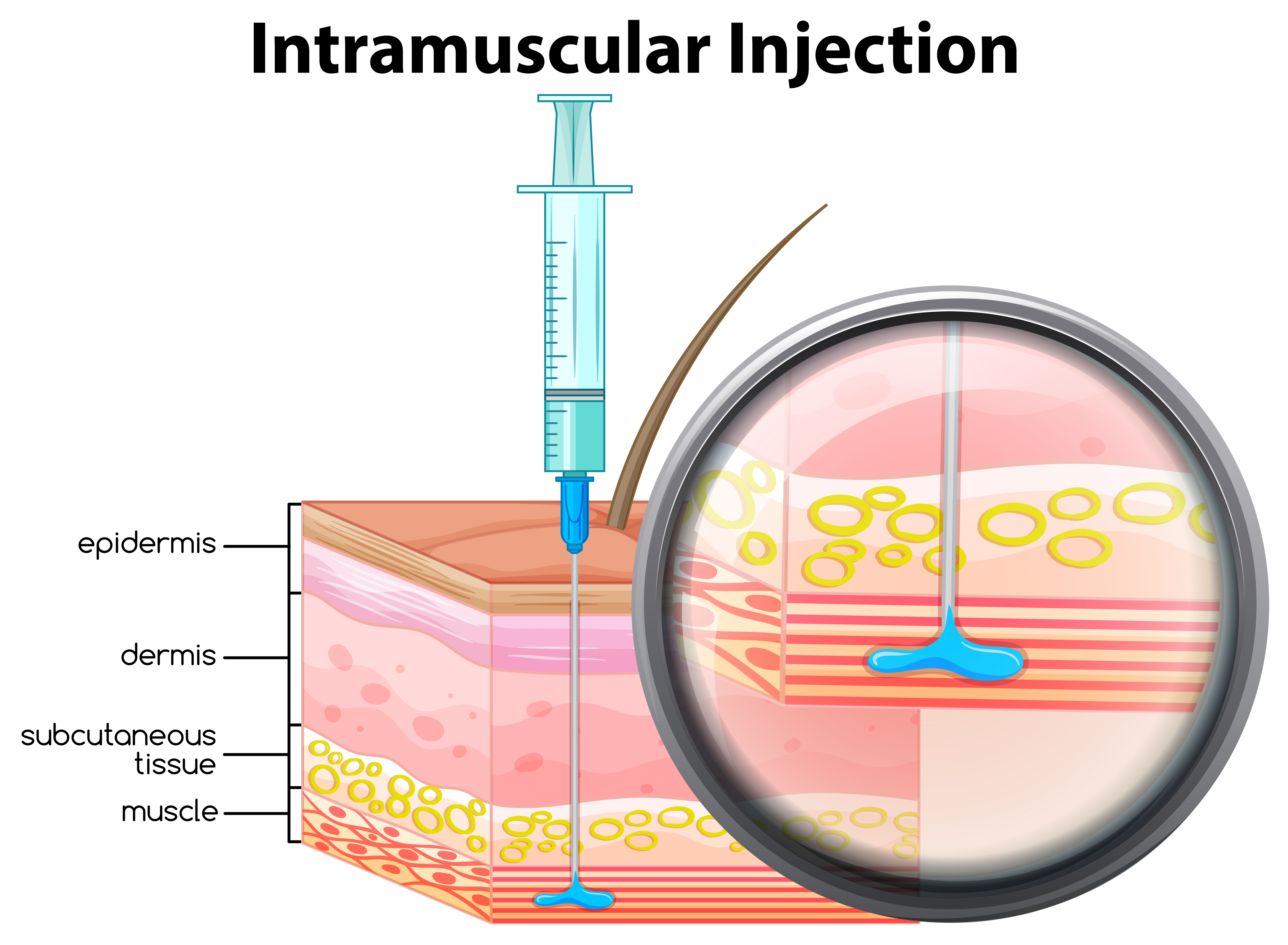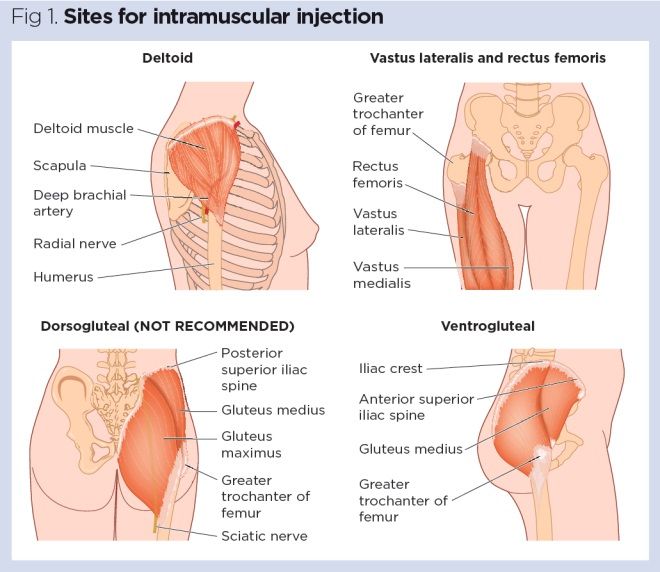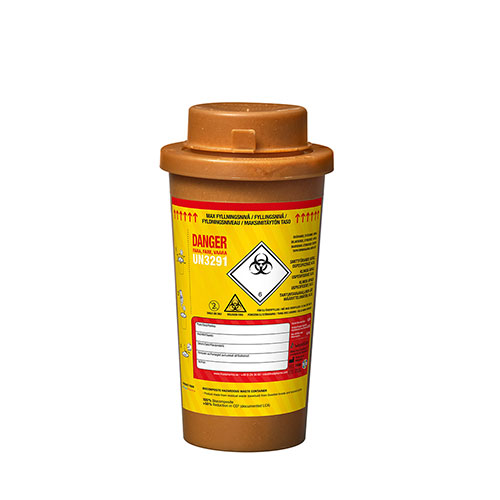This section concerns both transmasculine and transfeminine people, who use injections for their HRT. Injection is the most common route of administration for testosterone, whereas injections of estrogens - since unavailable through prescription in many European countries including Sweden - is mostly used in the frame of DIY HRT.
Testosterone is administered by Intramuscular injections
Estrogens are given through both Intramuscular and Subcutaneous injections.
Syringes and needle business (size, gauges…)
Performing injections necessitate some materials, and most obviously syringes. We distinguish the syringe (the pump, consisting of the barrel and plunger), and the needles.
The syringe and the needles often come separated, that is the needle being detachable from the syringe. This allows for a change of needles, not in order to use the same syringe over several injections, but to facilitate the process of one same injection; indeed, depending on the viscosity of the product you’ll inject, you could need/prefer one needle to draw the product easily from the vial, and another needle for the actual injection, that will limit the pain, or facilitate the mode of injection (IM or SC).
For the syringe itself, pay attention to the measurement unit: mL or cc. If conversion is possible, it is easier for both testosterone and estrogen injections to measure in mL.
The size of the syringes depends on the amount of product you need to inject at a time. For Nebido injections, you’ll usually need to inject 4ml every 2 to 3 months, which is a pretty big amount. The syringe must consequently be able to fit 4mL or slightly more than 4mL. For Androtardy, you usually perform more frequent injections, but with much lesser product (0.25-0.50mL). Don’t use an overly big syringe for small amounts like these, as precise measurement will be difficult. Injections of estrogens usually come with small amounts as well (from 0.1ml); a 1ml syringe is usually quite enough.
What matters for the needle is the length and gauge..
The length will determine how deep you can go: you need longer for IM, and shorter for SC:
- 1 inch to 1.5 inch is usually recommended for IM.
- ½ inch to ⅝ inch is usually recommended for SC.
The Gauge is the measurement unit for the diameter/thickness of the needle. The bigger it is, the easier and faster the liquid is dispensed, but the higher the pain. A small gauge means thicker needle, and a high gauge means thinner needle. The choice will depend on how much liquid you need to inject. The Gauge measurement comes with an international color coding (each gauge a color), and it spreads from 7G (the largest) to 33G (the thinnest). As a point of reference, the needles used for drawing blood for a common blood test are usually 21G.
-
If you need to inject a lot (like 4mL of Nebido), you might want to choose a smaller gauge (20 to 22G) in order to have the liquid injected faster, even if it means more pain at the injection. A long and slow injection can end up being more painful.
-
For small amounts (1ml and less), you may consider a higher gauge (25 to 30). Keep in mind that there is a length-gauge ratio, and performing IM injection with a longer needle will also mean a small gauge (thicker needle). On the contrary, short needles have a bigger gauge (thinner needles).
Small gauge (thick needle) is more appropriate for IM, and high gauge (thin needle) for SC.
Standard U-100 insulin syringe
The Standard U-100 insulin syringe can be used for small amounts, and can be particularly appreciated. It is suitable for subcutaneous injection as the needle is usually short. Short needle and high gauge (up to 30G) makes for nearly painless injection. The needle is attached to the syringe, which has pros and cons: the high gauge means it will take some time to draw the liquid from the vial(depening on the type of oil suspension used in your product), but it also means less hassle changing the needle, and less loss of product as dead space is reduced.
Dead space is the space from which the liquid drawn for the vial accumulates but cannot be injected. If dead space retains a tiny amount of liquid, in the long term of many injections, you might end up losing a few injections.





